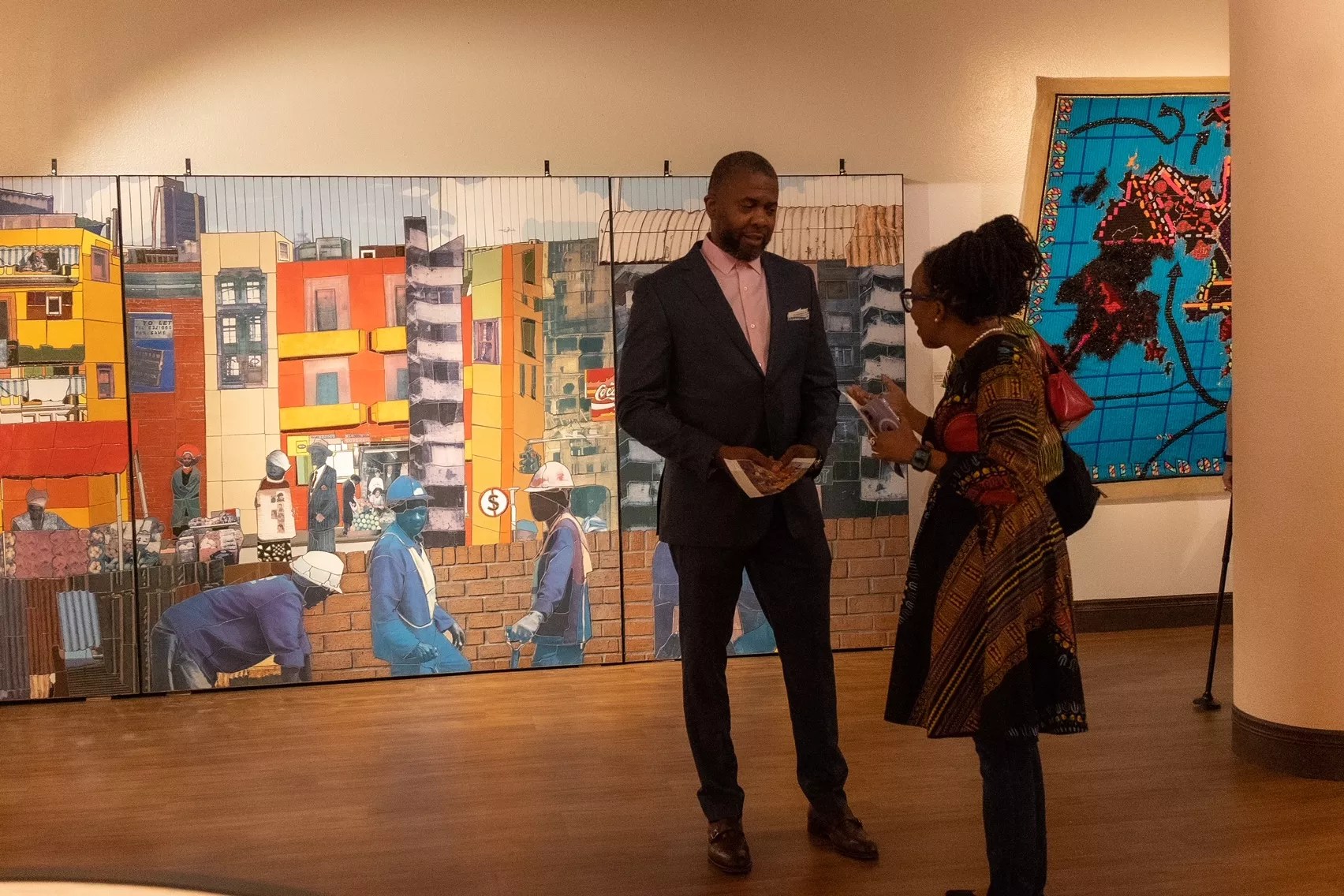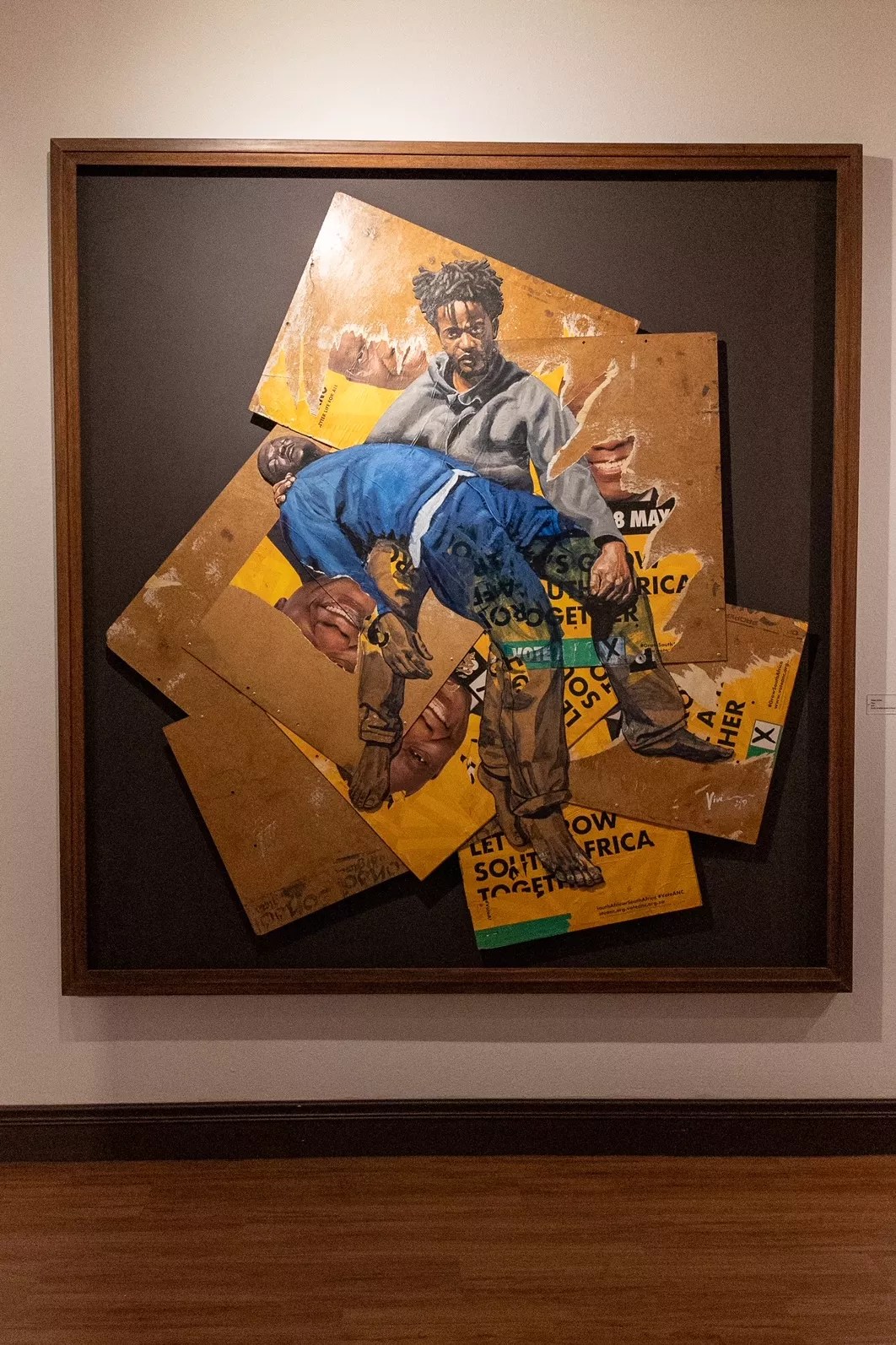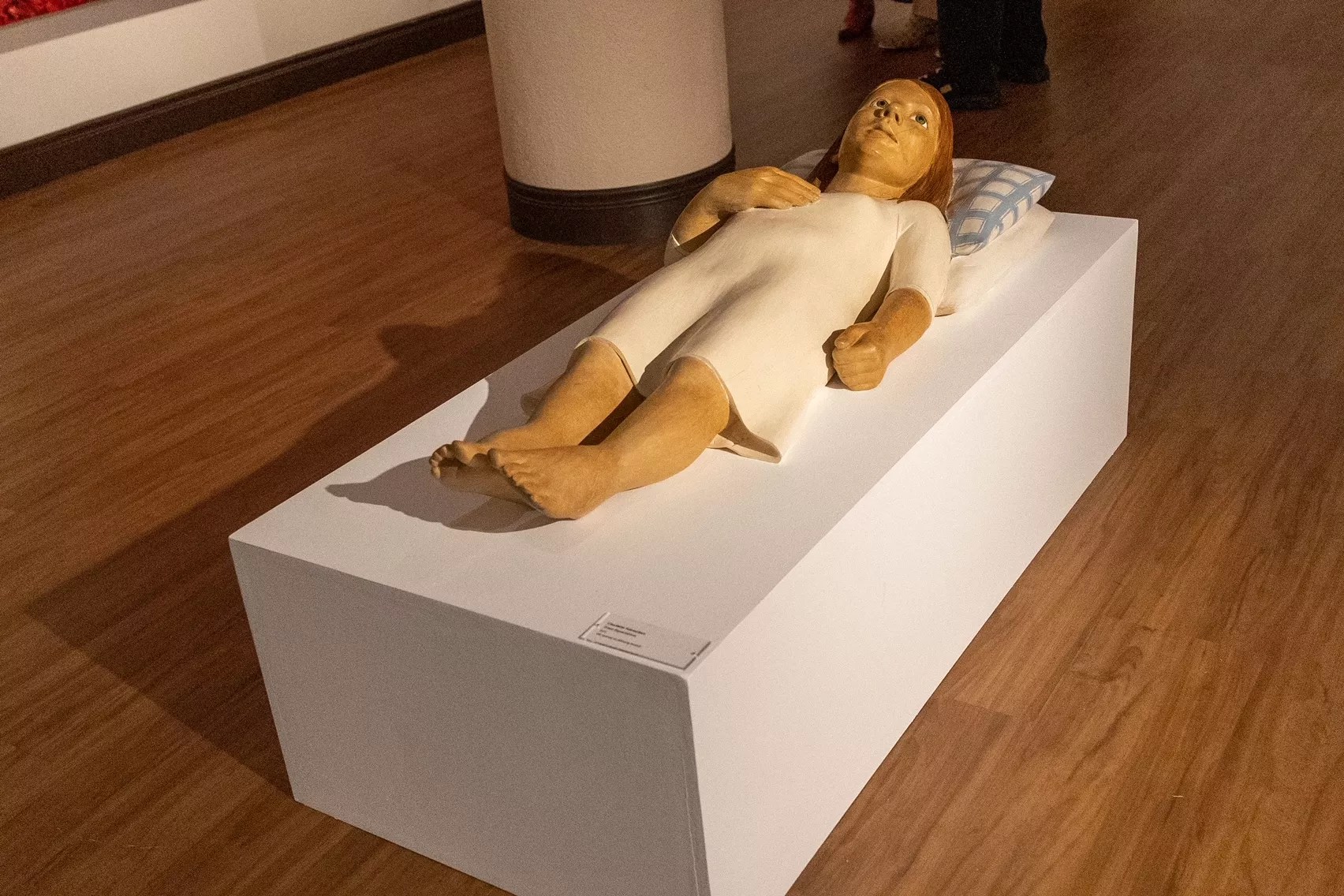
Andrew Sherman

Audio By Carbonatix
The Dallas Art Fair blows through the city like a tornado once a year and leaves in its wake a lot of grumbling local artists and gallerists. It’s a four-day affair that demands $250 for a ticket to the preview night and $25 for general admission and offers an assortment of easily digestible commercial art. It’s usually a great place for social media hounds to snap selfies with works that match their outfits, for rubbing shoulders with real estate grifters, and if you’re really in the market, maybe for buying a piece of art. It’s good old-fashioned fun and fine Dallas entertainment at its best. This year’s fair was no different, but arts month in April brought another new exhibition to Fair Park that is truly worth seeing.
Running through Aug. 13 at the African American Museum is the South African contemporary art exhibition, If You Look Hard Enough, You Can See Our Future, curated by Laurie Ann Farrell. The show offers 62 works from the vast art collection held by Nando’s, a restaurant chain based in Johannesburg, South Africa.
“The title of the exhibition comes from the text on one of the pieces, ‘If You Look Hard Enough, You Can See Your Future,’ by artist Stephen Hobbs,” says Farrell. “There are works in the show that manifest tough histories, but the overall themes of the show speak to a shared future, a shared humanity.”
Farrell has worked as the executive director at the Savannah College of Art & Design, and was the senior curator at The African Center in New York. She was chosen to curate this exhibition by the late businessman Dick Enthoven, who initiated the art collection years ago. Farrell chose 62 pieces from a massive catalog of 25,000 pieces.
“It took months to go through the collection database,” she says. “I was looking for exemplary works that could speak to the strengths of the collection and illustrate a meaningful experience for viewers.”
The show includes South African contemporary artists such as Zanele Muholi, Claudette Schreuders, Kagiso Patrick Mautloa, Ighan Adams, Stephen Hobbs, Vivien Kohler and many others. The works on display vary greatly in size, medium and subject matter. Paintings, sculptures, textiles, and photography are curated in a well-thought-out and charming manner that allows the viewer to appreciate the humanism inherent in each piece.

A contemporary South African art exhibition in Fair Park explores themes such as South Africa’s apartheid system.
Andrew Sherman
“The themes of portraiture, place and abstraction reflect the strengths of the Nando’s Art Collection,” Farrell says. “Text panels orient viewers to themes in each gallery. The hope is that people will feel immersed in shared themes of humanity and life.”
The themes of the exhibition are especially pertinent given South Africa’s complex, challenging and tumultuous history. South Africa was ruled by a brutal white supremacist regime over the course of many decades. The regime implemented racial subjugation laws known as apartheid, which were similar to the Jim Crow laws in the U.S.
For many South Africans, memories of apartheid are still vivid and raw, as the regime ended only three decades ago. Echos of this time can be felt in many of the works on display. One such example is artist Vivien Kohler’s featured mixed-media piece titled “Pietá,” which according to Kohler portrays both the confusion and sadness the artist felt regarding recent xenophobic attacks against Malawian immigrants in South Africa. For Kohler, being able to show his work in the U.S. is an opportunity to share his message and show gratitude for a dream realized.
“Being at the exhibition was a truly life-affirming experience,” Kohler says. “It felt as if I had accomplished a milestone not only for myself but also for all those who had believed in me, and who had invested so much in my earlier career all those years ago.”
Kohler has seen first-hand the destructiveness of racial and ethnic divisions and hopes to use his work to help people understand that they must learn to coexist peacefully with compassion. For the exhibition curator, Kohler’s message is right on point.
“Sadly, shared humanity speaks to crimes against humanity,” says Farrell. “If you look at a work by Vivien Kohler for example, he’s exposing xenophobia to make the point that we should all be more accepting and kind to one another. We are all human.”
The art show demonstrates that the U.S. and South Africa have much in common, bringing an even deeper layer of meaning to the exhibition. Although structurally imposed racial segregation ended in the U.S decades before apartheid did, the country still deals with its lingering effects. Just one room over from the art exhibition in the African American Museum hangs a century-old framed Klu-Klux Klan uniform. It serves as a stark reminder of just how bad things have been and how far society has come since.
“The future doesn’t belong to any single one of us; it is our collective future, both shaped by and reflecting of our shared humanity,” Farrell says.
Currently across the world, many countries are facing threats of authoritarianism and a resurgence of white supremacist ideas. Farrell and many of the South African artists in the exhibition are committed to the belief that art can fight against injustice and evil with both nuance and grace.
The greater message of If You Look Hard Enough, You Can See Our Future is that art can be a powerful tool of social change, capable of challenging oppressive power structures and allowing viewers to envision a better world. From the anti-apartheid movement to the Civil Rights movement, art gives a voice to the voiceless. Kohler reiterates the anti-colonial saying. “A luta continua,” he says. It means, “The fight continues.”

“Great Expectations” by Claudette Schreuders is one of the South African works curated from a collection of over 25,000 pieces of art at Nando’s.
Andrew Sherman